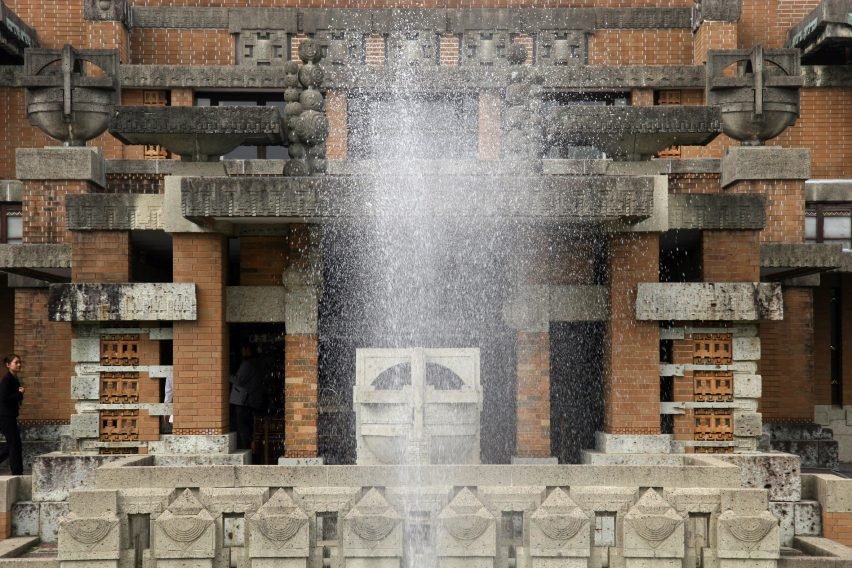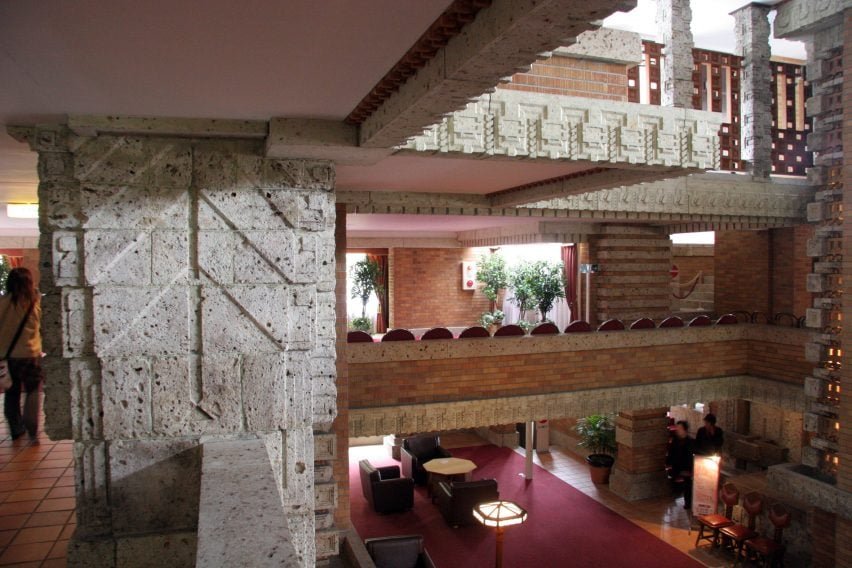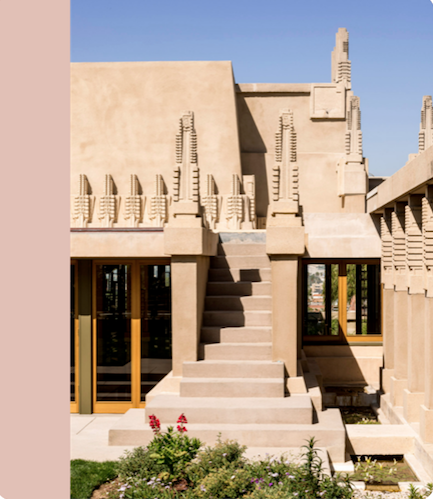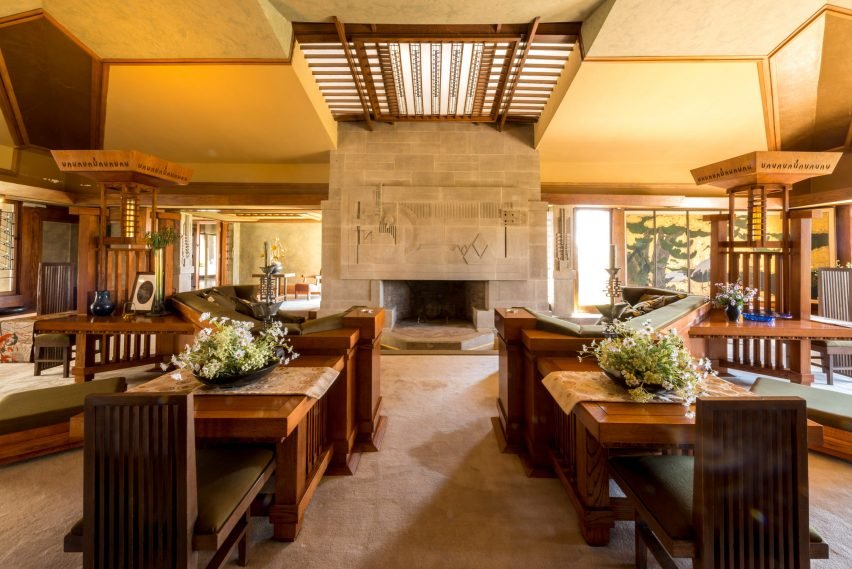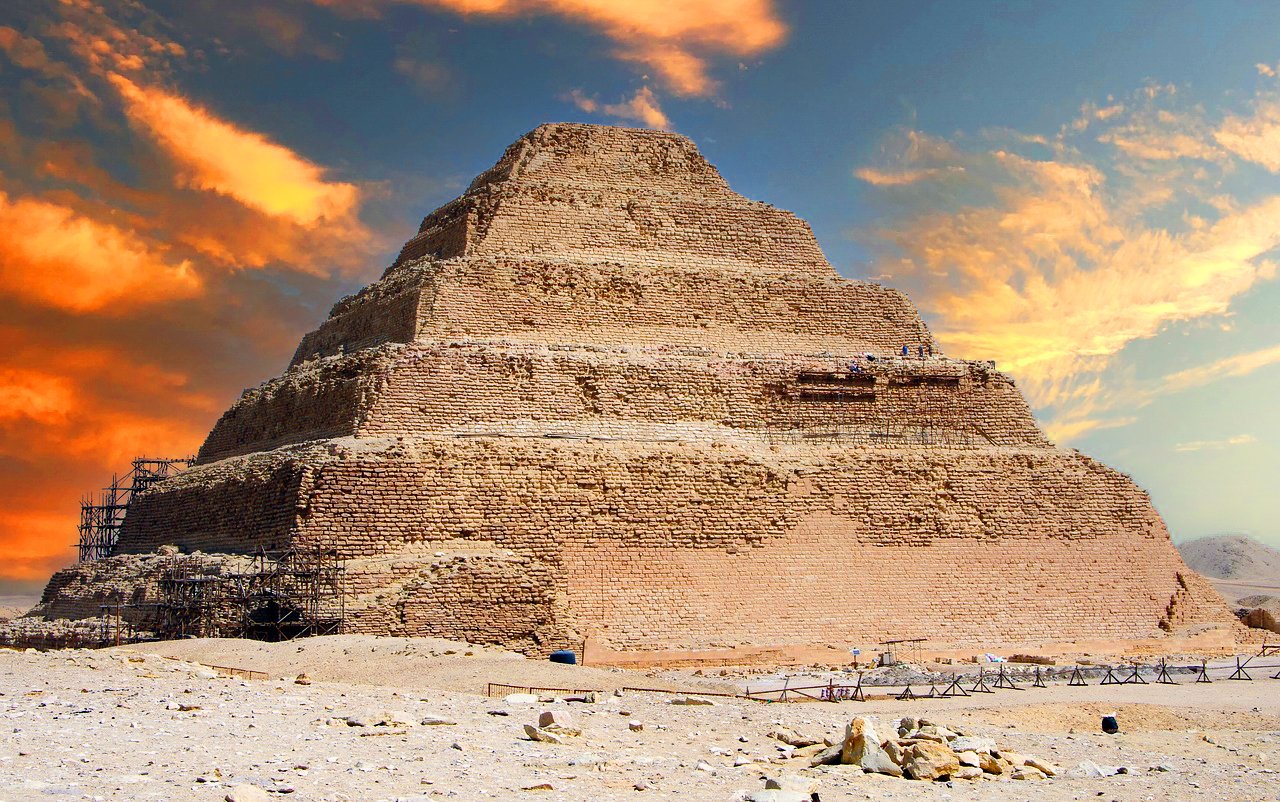Frank Lloyd Wright was deeply inspired by Architecture of Mexican Pyramids
Frank Lloyd Wright (FLW) the most renowned North American architect borrowed from ancient Mayan + Aztec cultures and directly from the Pyramids of Mesoamerica to create his awesome buildings. Who knew?
I had the good fortune to work for many years on one of his private homes in the Westchester Co. Alongside the talented architect of record I was tasked with designing and producing rugs and carpets throughout the house. The livingroom carpet, well over 800sf was based on none other than FLW’s floorplan of the house.
In both FLW’s Southern California Hollyhock House (1920) and in his Imperial Hotel in Japan (1923), he incorporated the stacked shapes of the Mesoamerican pyramids. As shown in these photographs, his structures gradually step up into a peak, not unlike the Pyramids. He become the key leader of this architectural movement, Art Deco, that continued into the 1930’s.
https://www.groundplans.com/collections/collaborations/flw-living-room/
https://buffaloah.com/a/nf/united/ext/
The temples in Palenque (r) – a Mayan city-state in southern Mexico built in 600-700 AD were made up of a series of staggered volumes. The main lobby building of the Imperial Hotel, Tokyo (l) references the pyramid’s architecture of pre-Columbian MesoAmerica.
When Frank Lloyd Wright (l) was searching for a modern style to compliment a home he was building in Southern California, the Hollyhock House, he looked to the influences of pre-Columbian Mexican Temple forms (r).
FLW’s Interiors + Façades
His interiors as well as the facades of his buildings are resplendent with the images and feeling that could only come from the Pyramids.
Here is a glimpse into the FLW house interior I was a part of, from a previous abode post.
https://www.groundplans.com/collections/collaborations/flw-living-room/
The Great Pyramids - A Link between Hemispheres
In 1920, a renowned American historian and linguist, Leo Weiner in his book, Africa and the discovery of America, explained how Columbus noted in his journal that Native Americans had confirmed, “black skinned people had come from the south-east in boats, trading in gold-tipped spears.” - San Bernardino American Newspaper
This premise is that the building of the Mayan Pyramids borrowed directly from the Egyptian Pyramids via Africans sailing across the Atlantic eons before Columbus’ voyage. It is now for all of us a given that the human species came out of Africa and that the seat of civilization is seemingly the Middle East: where agriculture got its start through the sophisticated harnessing of that vital source - water. This development converted us from hunter gatherers to a settled community. Thus exploration of astronomy, mathematics, architecture, writing, arts, crafts, politics became possible.
The only way this wealth of knowledge could be transported to the American continent would either be through the Bering Strait that exists between Russia and Alaska on the West Coast by walking which, today being only 55 miles apart with 2 Islands between them, might have historically been connected. Or alternatively, via seafarers to the East Coast. It is said Egyptian rulers had their dark skinned seafaring sailors set out for the Americas in both the 1200’s BC and 1300’s AD respectively.
The ingenuity of African culture and Native American know-how built these ancient Mexican civilizations. Whereas the European paradigm seems to have been to bring over slaves and decimate the Native American population as a way to build up their own “American culture”.
Africans trading with Native Americans
The great Mayan Temples/Pyramids - possibly built with African know-how were a great inspiration to Frank Lloyd Wright.
And although some articles refute this theory, wanting instead to stick to the mindset that Europeans were the first to cross the Atlantic, I do find these alternatives compelling. Especially when seeing the similarities of each to the other.
https://sb-american.com/2019/10/16/before-columbus-how-africans-brought-civilization-to-america/
An historian who thinks out of the box, Graham Hancock, recently debuted a series on Netfix. In it his own theory predates others to give credence to an ancient sophisticated civilization destroyed by the last Ice Age - around 12,800 years ago. In which relatively few survived. And those who did were able to disseminate their knowledge. In short, he has a dating system of the inner (first built) Pyramids that verifies their age. As well he assumes they had means we don’t know of to lift the extremely heavy weight of stones they were moving around.
The Olmecs
1200 B.C. seems to have pre-dated other advanced civilization in MesoAmerica and was the Mother Culture of Mexico. They brought civilization in the form of writing, astronomy and the arts to Mesoamerica and built the first Mexican cities. Mayan and Aztec cultures are said to stand on their shoulders.
OLMEC sculpture in Mexico 900-400 B.C. – they were the first MesoAmerican civilization to build cities in Mexico, all of which greatly influenced the Mayans as well as subsequent civilizations throughout the Americas.
Presently, and with great synchronicity is an exhibit that recently opened at the Metropolitan Museum of Art in NYC: Lives of the Gods: Divinity in Maya Art Nov 21, 2022-April 2, 2023
Egyptian Pyramids
Following are comparative pictures between the Egyptian Pyramids and the ones created in Mesoamerica.
Giza 2550B.C.
Pyramid of Djoser 2630B.C.
Mexican Pyramids
Teotihuacan Pyramids of the Sun + Moon 400B.C.
Palenque 600A.D.
Chichén Itzá Yucatan 600A.D.




